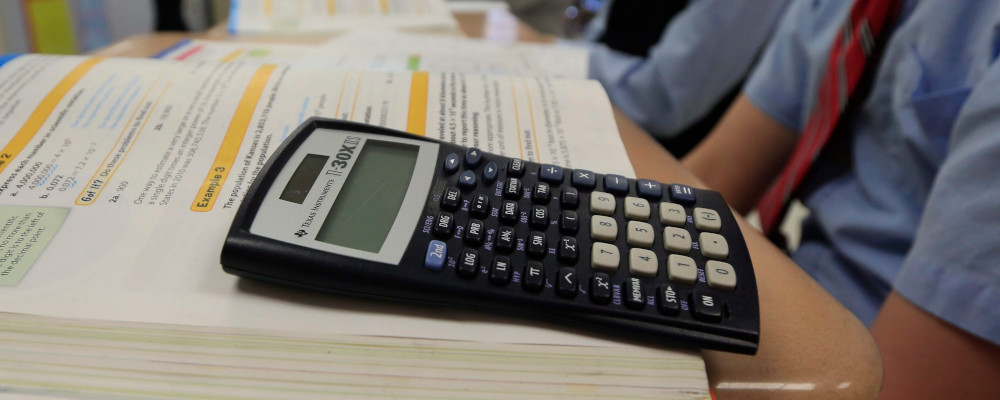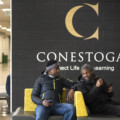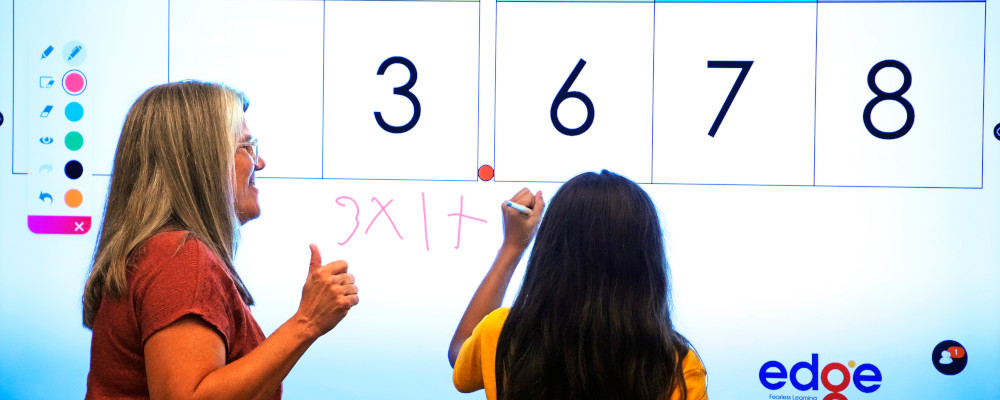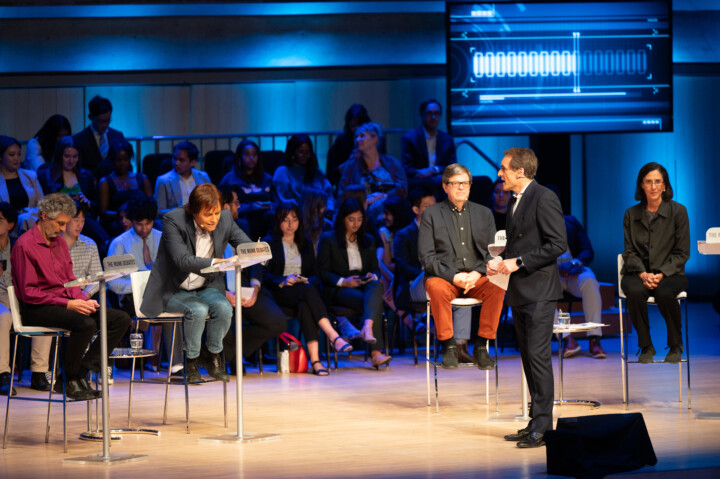A Mathematics teaching craze known as “Building Thinking Classrooms” (BTC) is now sweeping across North American K-12 education. With post-pandemic student math scores languishing and senior administrators scrambling for a quick fix, BTC has quickly taken over classrooms with its small group engagement activities and wall-mounted strip whiteboards known as “vertical learning spaces.” It’s also acquired a new and rather cheeky moniker on social media—#sinkingclassrooms.
Since its founder, Simon Fraser University education professor Peter Liljedahl, spoke at the Ontario English Catholic Teachers’ Association’s Toronto conference on May 2, 2015, BTC has expanded from its British Columbia origins and spread to proliferate classrooms around the world. It easily captured school system leaders and was seeded in local professional development sessions for school administrators and curriculum consultants. It has great appeal to principals and teachers, often with little mathematics background, steeped in “progressive” teaching methods attempting to hook kids and overcome their math anxieties.
However, university mathematics professors, specialist teachers, and engaged parents are beginning to raise serious objections to Liljedahl’s math teaching philosophy, its limited research basis, and its visible impact on students already struggling in mathematics. While Liljedahl’s approach is purportedly backed up by research, that claim is now attracting more critical scrutiny. Leading Canadian mathematics expert Dr. Anna Stokke of the University of Winnipeg is very skeptical about its research basis and is seriously questioning its widespread use in classrooms.

The whole approach is rooted in progressive teaching philosophy and espouses a popular and largely discredited strategy known as “minimally guided classroom instruction.” Most lessons begin with students assigned tasks in groups of two to three or four and asked to collaborate on problem-solving.
Here’s how it works. First, the groups are randomly selected, purportedly to promote connection and different thinking. With a minimum of direct instruction, the lesson revolves around vertical learning, random groupings, and a wide variety of curricular and non-curricular thinking tasks. Essentially, every day in math class, students are mostly placed in small groups and left alone to figure out the answers.
Liljedahl’s book, Building Thinking Classrooms, is described by Nova Scotia math teachers as “the bible” and the walls of many math classrooms are covered in “vertical learning spaces” (whiteboards). A patented commercial product, known as “wipebooks,” is tied in with the consultant’s work and, in PD sessions, they are freely distributed to teachers, especially in schools affiliated with the Halifax Regional Centre for Education
American mathematics educator Michael Pershan, author of Teaching Mathematics with Examples, was one of the first to raise objections. The founder makes “big claims” that the approach is research-based based on four academic articles, but, in his view, “the evidence is weak.” Surveying his supporting studies, Pershan found that “it doesn’t support big generalizations.”
A few examples will suffice: Liljedahl’s research measures engagement but not learning; it focuses on only two aspects in engagement with vertical whiteboards and homework; it counts teacher uptake as engagement; and it is entirely based upon older students with some math background. Most critical of all, there’s no indication of how the test groups of students were selected or any explanation of how his percentages are derived in his reports.
The BTC philosophy has some appeal because it creates a buzz of activity. It gained a foothold because its founder is engaging and it works best with teachers who have prior knowledge of mathematics. Regular students struggling in the subject, left to fend for themselves, tend to get lost and either tune out or act out in class. That’s the dominant view of several teachers who spoke with me but, sad to say, insisted on remaining anonymous for fear of repercussions.
“Creative thinking” is the buzzword of our time, and anything attached to it attracts senior administrators looking to make an impact. Right across Canada a sizable proportion of the teachers in math classrooms have only a smattering of mathematics background or are teaching “out of field.” Student engagement is their priority and BTC fills that bill, even if it doesn’t improve students’ mastery of mathematics nor deepen problem-solving skills.

School leaders know their audience. “Nobody reads the papers,” Pershan points out. “Very few people care about getting this right. And yet, apparently, almost everybody cares a great deal about the perception that some new thing is rooted in research. It opens doors, hearts, and minds.” It also generates speaking tours, substantial consulting fees, and sucks-up time and resources better spent actually teaching kids how to do math and get the correct answers.
Engaged parents exposed to “Building Thinking Skills” promotional meetings are beginning to raise questions that are unlikely to go away. Liljedahl claims to be building “thinking classrooms” (BTC, 2016a, p. 364), but parents are getting a one-sided sales pitch, and critical questions are being brushed aside. It did not go over well in Berkeley Heights public schools, where a November 2022 parent survey revealed that the vast majority of parents and students found BTC ineffective and petitioned the school district to suspend the program.
One razor-sharp Greater New York City parent, Virginie Delwart, active with Berkley Heights Community Watch, claimed that many students were struggling to master math in the program and it was dividing both her family and the community. Too many honours students were bombing their assessments, and weak students with learning challenges were completely lost.
What’s my take on the latest craze? The fix is in and, judging from the North American social media reaction, BTC is saddled with the unfortunate label of “sinking classrooms.” It’s unlikely to improve student math scores or raise achievement.
Recommended for You

Should Israel support a two-state solution? The Munk Debates prove open discussion is still possible

‘This is going to get very messy’: Will Canada drop religious protections from its hate speech laws?

The question is not whether liberty should be ordered, but how

International students jumped 400 percent at Canadian public colleges in last decade: Statistics Canada




